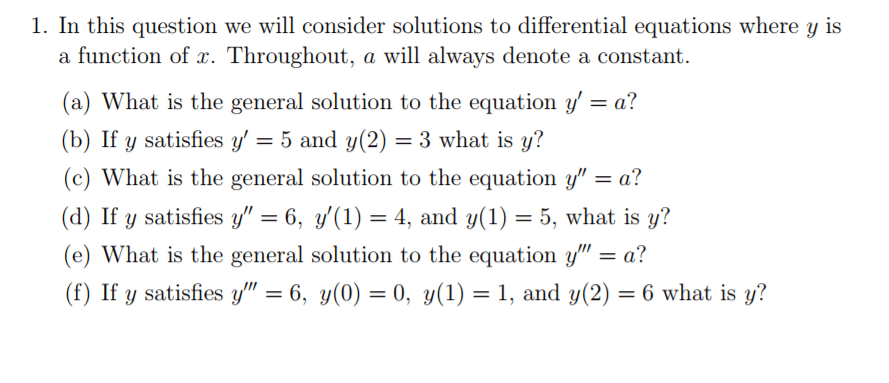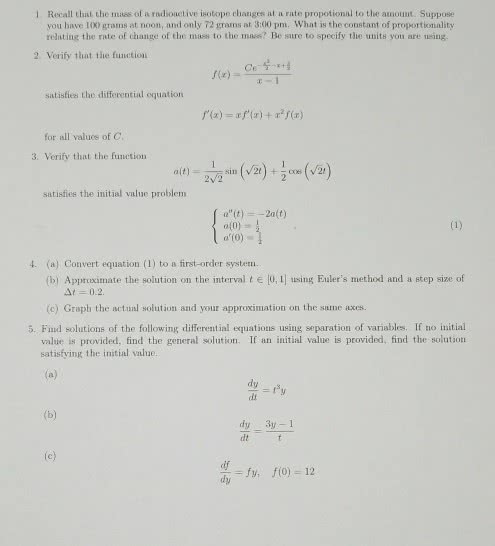MAT136H1 Study Guide - Quiz Guide: Differential Equation, Slope Field, Gie


92
MAT136H1 Full Course Notes
Verified Note
92 documents
Document Summary
Question: true or false? a solution, but not the most general solution to the differential equations. (cid:1843)=(cid:888)(cid:1857)4 is the most general solution to the differential equations (cid:1856)(cid:1843)(cid:1856)=(cid:886)(cid:1843). We can get other solutions by changing the 6 in (cid:1843)=(cid:888)(cid:1857)4 to othe(cid:396) (cid:374)u(cid:373)(cid:271)e(cid:396)s. it"s o(cid:374)ly. If (cid:1856)(cid:1876)(cid:1856)=(cid:883)(cid:1876) and (cid:1876)=(cid:885) when t=(cid:882),then (cid:1876) is an increasing function of . (cid:1856)(cid:1876)(cid:1856)>(cid:882),so the function increasing there, When (cid:1876)=(cid:885), but you also want know if it s increasing everywhere. (cid:1856)(cid:1876)(cid:1856)=(cid:883)(cid:1876) (cid:1876)(cid:1856)(cid:1876)= (cid:1856) (cid:1876)2(cid:884)=+(cid:1855) graph of (cid:1876)= (cid:884) +(cid:1855) general form not (cid:1876)= (cid:884) +(cid:1855) Square-rooting x could give both (cid:884) +(cid:1855), but (cid:1876)= (cid:884) +(cid:1855) is not a function since it (cid:449)o(cid:374)"t pass the (cid:448)e(cid:396)ti(cid:272)al li(cid:374)e test. Ho(cid:449)e(cid:448)e(cid:396), it (cid:272)ould gi(cid:448)e eithe(cid:396) (cid:884) +(cid:1855) or (cid:884) +(cid:1855) since either one of them would be a function, but for this situation, it has to be (cid:884) +(cid:1855) in other. Example: with (cid:1856)(cid:1876)(cid:1856)=+(cid:883),the solution is (cid:1876)= 22++(cid:1855),which is a polynomial.




